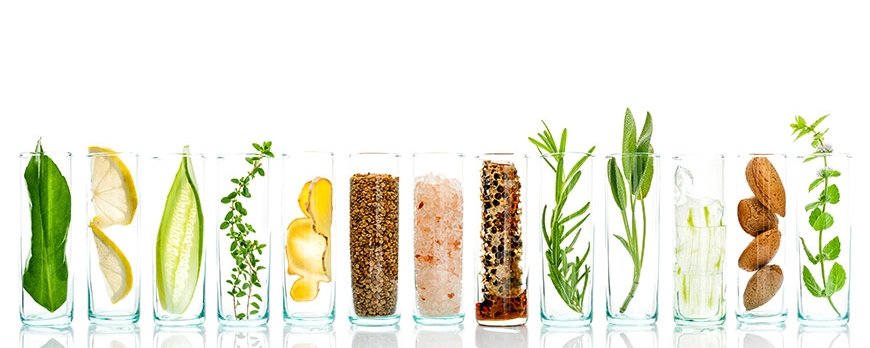How is your daily skin care routine affecting the environment?
Many people are becoming increasingly aware of how to be a thoughtful, eco-friendly consumer. For some, this means bringing your own bags to the grocery store, and for others, this means recycling and composting the waste you make. Unfortunately, trying to figure out how to shop green when when buying hair products, makeup, and even sunscreen is a lot more difficult than simply buying products that advertise as “natural.”
It’s no secret that many cosmetic companies use synthetic chemicals in their products. While that may not be cause for concern, the Environmental Working Group, or EWG, found that about 89% of the 105,000 ingredients that go into cosmetics are not evaluated by the CIR, FDA, nor any other certifiable organization. For users, this often means coming into daily contact with hundreds of chemicals that can unknowingly damage our health. In one report, it was found that 146 ingredients contain impurities that are linked to cancer and other bodily harm, and thus the majority of cosmetic products on the shelf have come into contact with at least one of these contaminants. In this highly unregulated multi-billion dollar industry, companies will often boast “natural” ingredients even when they are chemically modified before being put into a product, and there is no oversight on these labels.
We have it easy, though, because we can simply wash off these products, and individuals can choose to avoid products with the unhealthy chemicals. Unfortunately, the problem does not stop there. These substances end up in marine ecosystems, where higher concentrations can be detrimental to entire wildlife communities.
A chemical found in nearly all cosmetics, paraben, is an endocrine disruptor for dolphins and other marine animals and is potentially linked to coral bleaching. What’s worse, once introduced to an ecosystem, parabens have been found to accumulate in fish species, birds, and even bears.
Similarly, triclosan, another popular addition to your favorite cosmetics and an endocrine disruptor, has been found in great abundance in the Great Lakes, where it reduces the lifespan of fish and can cause mutations in amphibians.
Synthetic antioxidants, BHA and BHT, are often used as preservatives in different lipsticks and moisturizers. On top of being a potential carcinogen to humans, these chemicals are being introduced to water systems where they can cause death of fish and shellfish.
Another common molecule in sunscreens and makeup, titanium dioxide, can damage snails and are phototoxic to phytoplankton, an organism that’s responsible for making two-thirds of the world’s oxygen.
There are many dangers in the run-off of cosmetic chemicals, and lawmakers are finally beginning to recognize the importance of regulating what goes into cosmetics. Recently, the United States and Canada banned microbeads, a common exfoliant in facial cleansers. These tiny polyethylene beads contributed about the same amount of plastic waste as the plastic containers the products came in, and furthermore, aquatic animals can easily consume them. In Hawaii, after discovering that chemicals in sunscreen contribute to more rapid rates of coral bleaching, a bill was passed to ban the perpetrating chemicals. This was especially imperative to Hawaii where coral reef tourism exposes the reefs to about 6000 tons of sunscreen annually.
Even natural materials are not always eco-friendly. Palm oil, a natural substance, is found in most cosmetics where it improves the textures of many shampoos and lipsticks. In order to create palm plantations, forests and peatlands must be clear cut and burned in Southwest Asia. This cultivation process causes rapid rates of deforestation, which in turn releases a high amount of carbon that advances global climate change. Harvested only in Indonesia and Malaysia, palm oil is causing tropical forests to be quickly decimated, and only about fifteen percent of native species can survive the loss of habitat. The island of Borneo had lost over half of their tropical forests by 2007, and WWF projects palm oil to wipe out another 21.5 million hectares by 2020.
To combat the environmental downsides of the cosmetic industry, we must demand more regulation and testing of what goes into our makeup, shampoos, deodorants, and other everyday products. On an individual level, Skin Deep Online Database allows people to check the safety of numerous cosmetics, and scorecard.org can give information about ingredients you may question on a label. Checking if products have been ethically and sustainably sourced, especially if they contain palm oil, promotes companies that are conscious of their environmental impacts. Next time you’re running low on your favorite lotion, consider researching what brands actually support the environment!

